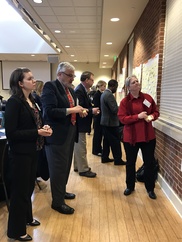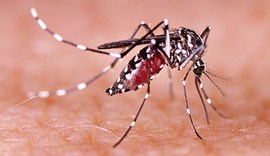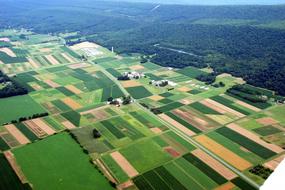|
Having trouble viewing this email? View it as a Web page.

|
|
|
The NIFA Update is a weekly compendium of news and
information that may be of interest to Land-Grant and non-Land-Grant
Universities, NIFA stakeholders, and other subscribers.
March 2, 2017
Correction: Last paragraph dropped from 'Tactical Sciences' article.
 |
 The University of Maryland, College Park, in collaboration with the National Institute of Food and Agriculture (NIFA), hosted a national conversation regarding “Tactical Sciences for the Protection of the U.S. Agricultural Enterprise” Feb. 15-16. The two-day exchange, at the university, was held to discuss pest and disease challenges and threats facing the U.S. agricultural enterprise, and to brainstorm on possible strategies and solutions to effectively address the challenges.
Tactical science programs protect the integrity, reliability, sustainability, and profitability of the U.S. food and agriculture system against threats from pests, diseases, contaminants, and natural disasters.
Agriculture and agriculture-related industries contributed $835 billion to the U.S. gross domestic product and helped create over 17 million jobs in 2014. This economic impact, and the security and safety of America’s food supply are under continuous threat from numerous foreign, emerging, and endemic pests, diseases, and contaminants such as toxins. Numerous foreign or emerging pests, diseases, and contaminants continually threaten the safety and availability of our food supply.
“I couldn’t be more pleased about the dialogue, energy, and ideas that emanated from this conversation,” said Sonny Ramaswamy, NIFA director. “We need to strengthen the investments we make in our tactical sciences capabilities to better secure our nation's food production system.”
More than 75 NIFA partners and stakeholders, representing a number of federal agencies, commodity groups, associations, universities and industry across the nation, participated in this first-of-its-kind meeting. Participants considered issues including:
- What economic, political, social, technological, and scientific trends/forces will impact security of the American food system enterprise in the next 10 years?
- What efforts are currently working related to the Tactical Sciences, and where are opportunities for improvement?
- What should a successful approach and strategy for the Tactical Sciences look like moving forward?
NIFA has several programs that effectively support the development of “tactical science” methods, tools and networks. These include surveilling, detecting, monitoring, and managing plant, animal, and public health pests, diseases and contaminations, and enhancing livestock, crop production diversification, and efficiency. NIFA’s current tactical science investments are in three areas: detection and diagnostics (National Plant Diagnostic Network and the National Animal Health Laboratory Network), regulatory systems support (Minor Crop Pest Management, Food Animal Residue Avoidance Database, and the Minor Use Animal Drugs Program), and deployment of new crop and animal production and protection technologies and management systems (Crop Protection and Pest Management, Minor Crop Pest Management, Minor Use Animal Drugs Program, and the Extension Disaster Education Network).
Next steps following the February meeting will be the development
of a shared vision and message related to Tactical Sciences to communicate the
importance to external and internal audiences. For more on the Tactical Sciences “Call to
Conversation,” visit the University of Maryland, College Park’s article.
|
|
|
Success Story
 Common Bacterium May Help Control Disease-bearing Mosquitoes
Genes from a common bacterium can be harnessed to sterilize male insects, a tool that can potentially control populations of both disease-bearing mosquitoes and agricultural pests, researchers at Yale University and Vanderbilt University report in related studies published March 1 in Nature and Nature Microbiology journal.
The studies highlight the peculiar reproductive role of Wolbachia bacteria, which are found in the testes and ovaries of most insect species. Eggs fail to develop when fertilized by infected males, a process called cytoplasmic incompatibility. However, when females are also infected with Wolbachia, healthy embryos can develop.
The work was funded by NIFA and the National Institutes of Health.
Read the full article on ScienceBlog.
|
Agriculture in 2050: Recalibrating Targets for Sustainable Intensification
 The prevailing discourse on the future of agriculture is dominated by an imbalanced narrative that calls for food production to increase dramatically—potentially doubling by 2050—without specifying commensurate environmental goals. The aim is to rebalance this narrative by laying out quantitative and compelling midcentury targets for both production and the environment.
An analysis by Mitchell Hunter and other researchers at Penn State shows that an increase of approximately 25%–70% above current production levels may be sufficient to meet 2050 crop demand. At the same time, nutrient losses and greenhouse gas emissions from agriculture must drop dramatically to restore and maintain ecosystem functioning. Specifying quantitative targets will clarify the scope of the challenges that agriculture must face in the coming decades, focus research and policy on achieving specific outcomes, and ensure that sustainable intensification efforts lead to measurable environmental improvements. The article was published in the Feb. 22 issue of BioScience. The National Science Foundation and NIFA supported this work.
Photo Credit: Randy Kilmer
|
 Is Training and Education American Aquaculture’s Achilles Heel?
Many who graduated from aquaculture programs back in the 1970s and into the 1980s successfully entered the aquaculture sector, but now, a large portion of them are coming closer to retirement. At the same time, the opportunities for the younger generation to study aquaculture appear to be slowly declining.
A technical report by Dr. Gary Jensen, a former NIFA national program leader for aquaculture, identifies several reasons for the decline in educational provisions. Jensen’s research surveyed institutions across the United States that offered any level of aquaculture-related instruction. Some reported they had ended aquaculture programs because of fewer job opportunities, particularly in government and academic sectors, as well as disappointing industry development in some areas. Other reductions appear to arise from aging teaching faculty and increased competition for limited extramural grant funds to support graduate students and programs. See the journal Fisheries for the full report.
|
USDA Invests $4.8 Million in University Agricultural Programs
NIFA announced 19 grants totaling $4,790,100 to support agricultural science programs at non-land-grant universities. The funding is made possible through NIFA’s Capacity Building Grants for Non-Land-Grant Colleges of Agriculture (NLGCA) program, authorized by the 2014 Farm Bill.
NIFA’s NLGCA program offers competitive grants to help these institutions maintain and expand their capacity to conduct education, research, and outreach activities in agriculture, renewable resources, and related disciplines. NLGCAs also support the economic vitality of rural communities by funding new degree programs that emphasize new and emerging employment opportunities. Read the full release on the NIFA website.
RFA Announcements
NIFA Announces $1.8 Million for Research on Next Generation
Pesticides
NIFA announced $1.8 million in available funding to
research new, environmentally- friendly pesticides, and innovative tools and
strategies to replace an older treatment, methyl bromide. Funding is made
through NIFA’s Methyl Bromide Transition Program. Read the full
announcement.
NIFA Announces $320,000 in Funding for Children, Youth, and
Families At-Risk Sustainable Community Projects
NIFA announced the availability of $320,000 in funding
to develop and deliver educational programs that equip at-risk youth with the
skills they need to lead positive, productive, and contributing lives. The
funding is made available through the Children, Youth, and Families At-Risk
Sustainable Community Projects (CYFAR SCP) grants, which are funded through
section 3(d) of the Smith-Lever Act of 1914, administered by NIFA, and
authorized by the 2014 Farm Bill. Read the full announcement.
NIFA Announces Nearly $770,000 for Canola Research
NIFA announced the availability of up to $766,000 for
fundamental and applied research to help develop and share new commercial
canola varieties and products, and expand the crop’s growing regions. This
funding is made available through NIFA’s Supplemental and Alternative Crops
Competitive (SACC) grants program. Read the full announcement.
|
|
|
NIFA invests in and advances agricultural research,
education, and extension, and promotes transformative discoveries that
solve societal challenges.
|
|
|
|